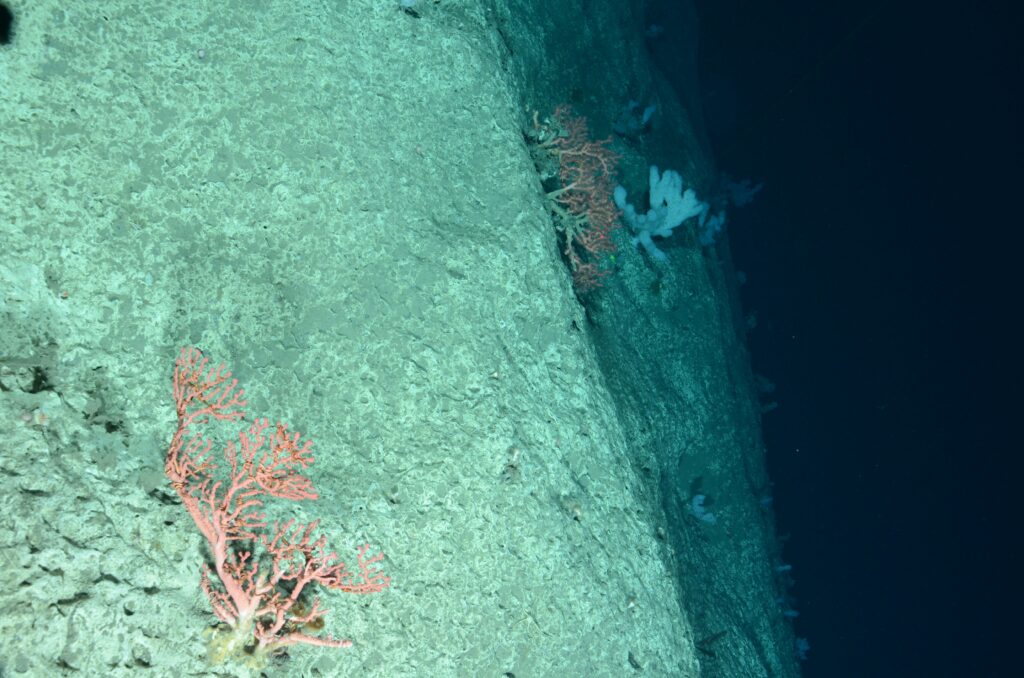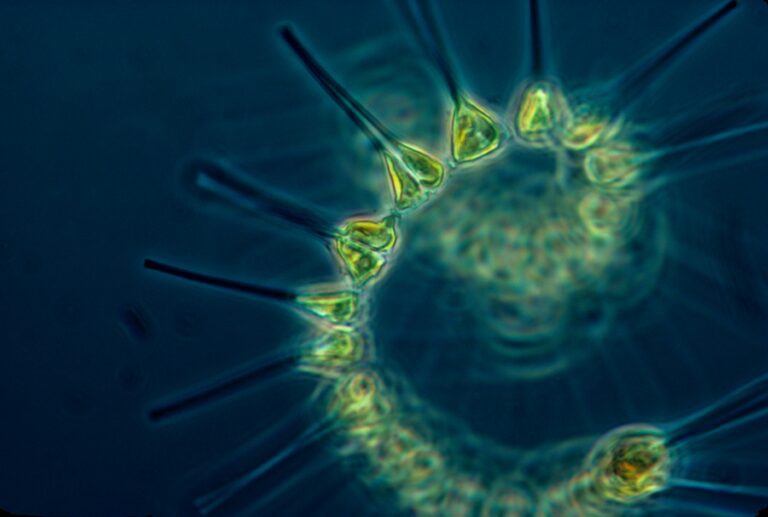Seagrasses may not always be the first thing that comes to mind when envisioning marine ecosystems, but their significance cannot be overstated. Often overshadowed by coral reefs and mangroves, seagrasses play a vital role in maintaining the health and balance of coastal environments worldwide. In this blog post, we’ll delve into the fascinating world of seagrasses, exploring their importance, the threats they face, and why their preservation is crucial for the well-being of marine life and human communities alike.
Seagrasses
Seagrasses are a unique group of flowering plants that have adapted to live fully submerged in marine environments. They possess several distinguishing characteristics that set them apart from terrestrial plants, including their ability to thrive in saltwater, their specialized root systems, and their role as essential habitat providers in coastal ecosystems.
Definition and Characteristics
Seagrasses belong to the botanical group known as angiosperms, which are flowering plants. Unlike most terrestrial plants, seagrasses have adapted to life underwater, where they form extensive meadows in shallow coastal areas. These meadows are composed of closely packed, grass-like leaves that sway with the movement of ocean currents.
One of the key adaptations of seagrasses is their ability to extract nutrients from the water and sediment through their specialized root systems. These roots anchor the plants to the seabed and absorb essential nutrients for growth. Additionally, seagrasses have evolved a unique reproductive strategy involving underwater pollination, where male and female flowers release pollen and seeds into the water column for dispersal.
Seagrasses play a crucial role in marine ecosystems by providing habitat and food for a diverse range of marine species. They also help stabilize coastal sediments, reduce erosion, and improve water quality by trapping sediments and absorbing excess nutrients.
Distribution and Habitats
Seagrasses are found in coastal regions around the world, from tropical to temperate climates. They typically inhabit shallow, sheltered areas such as bays, lagoons, and estuaries, where they can receive sufficient sunlight for photosynthesis. However, some species can tolerate a wide range of environmental conditions, including high salinity, fluctuations in temperature, and varying levels of water clarity.
The distribution of seagrass species varies depending on local environmental factors such as water depth, substrate type, and nutrient availability. In general, seagrass meadows are most abundant in areas with soft sediment substrates, where they can easily anchor their roots and spread horizontally to form dense mats.
Despite their importance, seagrass ecosystems face numerous threats, including coastal development, pollution, overfishing, and climate change. Conservation efforts aimed at protecting and restoring seagrass habitats are essential for maintaining the health and resilience of coastal ecosystems worldwide.
Importance of Seagrasses in Marine Ecosystems
Seagrasses play a crucial role in maintaining the health and stability of marine ecosystems through their diverse array of ecological functions. From providing vital habitat for marine species to contributing to carbon storage and climate regulation, the importance of seagrasses cannot be overstated.
Biodiversity Hotspots
Seagrass meadows are hotspots of biodiversity, supporting a wide variety of marine life ranging from tiny invertebrates to large fish and mammals. These underwater meadows provide habitat and food for numerous species, including commercially important fish and shellfish. Many marine organisms rely on seagrass beds for shelter, breeding grounds, and nursery areas, making them essential for maintaining healthy fish populations and supporting overall marine biodiversity.
Carbon Storage and Climate Regulation
Seagrasses are highly effective at storing carbon dioxide (CO2) from the atmosphere through the process of photosynthesis. They capture and store carbon in their tissues and in the sediment where they grow, helping to mitigate the impacts of climate change by reducing greenhouse gas levels in the atmosphere. Additionally, seagrass meadows contribute to the formation of blue carbon ecosystems, which are recognized for their significant carbon sequestration potential. Protecting and restoring seagrass habitats is therefore critical for enhancing carbon storage and mitigating climate change impacts on coastal ecosystems.
Nursery Grounds for Marine Species
Seagrass meadows serve as important nursery grounds for many commercially and ecologically valuable marine species, including fish, crustaceans, and mollusks. The dense underwater vegetation provides shelter and protection for juvenile marine organisms, allowing them to grow and develop in relative safety. Healthy seagrass habitats support higher abundance and diversity of juvenile fish compared to unvegetated areas, ultimately contributing to the resilience of marine populations and supporting sustainable fisheries.
Sediment Stabilization and Erosion Control
The dense root systems of seagrasses help stabilize coastal sediments and reduce erosion along shorelines. By trapping sediments with their roots and blades, seagrass meadows can prevent shoreline erosion caused by wave action and currents. This erosion control function is especially important in areas prone to coastal erosion and storm damage. Seagrasses also help maintain water clarity by reducing sediment resuspension, which in turn supports the growth of other marine plants and organisms.
In summary, seagrasses are invaluable components of marine ecosystems, providing essential habitat, supporting biodiversity, mitigating climate change, and protecting coastal areas from erosion. Conservation efforts focused on preserving and restoring seagrass habitats are essential for maintaining the health and resilience of coastal ecosystems worldwide.

Threats to Seagrasses
Seagrass ecosystems face a multitude of threats that jeopardize their health and survival. From pollution and coastal development to the impacts of climate change and overfishing, these threats pose significant challenges to the conservation of seagrass habitats and the species that depend on them.
Pollution
Pollution from various sources, including agricultural runoff, sewage discharge, and industrial activities, poses a significant threat to seagrass ecosystems. Excess nutrients such as nitrogen and phosphorus can fuel algal blooms, which reduce light penetration and smother seagrass beds. Chemical pollutants, such as heavy metals and pesticides, can accumulate in seagrass tissues, leading to toxicity and impaired growth. Oil spills and plastic debris also pose direct threats to seagrass habitats, affecting their health and productivity.
Coastal Development
Coastal development activities, such as dredging, land reclamation, and construction of ports and marinas, can directly impact seagrass habitats. These activities alter water flow patterns, increase sedimentation, and disturb seagrass beds, leading to habitat loss and fragmentation. Coastal infrastructure development also contributes to increased runoff of pollutants and sediments into coastal waters, further exacerbating the threats to seagrass ecosystems.
Climate Change
Climate change poses a significant threat to seagrass ecosystems through its impacts on sea levels, water temperature, and ocean acidity. Rising sea levels can lead to the inundation and loss of coastal seagrass habitats. Warming ocean temperatures can disrupt the reproductive cycles of seagrasses and increase the frequency and severity of marine heatwaves, which can lead to widespread mortality of seagrass populations. Ocean acidification, caused by the absorption of excess carbon dioxide from the atmosphere, can impair the ability of seagrasses to build their calcium carbonate structures and may lead to reduced growth and survival rates.
Overfishing and Habitat Destruction
Overfishing of marine species, particularly herbivores that graze on algae and help maintain healthy seagrass meadows, can indirectly impact seagrass ecosystems. Removal of key herbivores can lead to algal overgrowth, which can outcompete seagrasses for light and nutrients, ultimately leading to the decline of seagrass beds. Additionally, destructive fishing practices such as bottom trawling and dredging can directly damage seagrass habitats by uprooting plants and disrupting the seabed.
VIDEO CREDITS SCIENCE FOR PUBLIC
FAQs
Q. What are seagrasses and where are they found?
A. Seagrasses are flowering plants that grow in marine environments, particularly in shallow coastal waters. They are found in various regions worldwide, including tropical, temperate, and polar waters.
Q. What role do seagrasses play in marine ecosystems?
A. Seagrasses play several critical roles in marine ecosystems. They provide habitat and nursery grounds for a diverse array of marine species, including fish, invertebrates, and algae. Seagrass meadows also help stabilize coastal sediments, reduce erosion, and improve water clarity by trapping suspended particles.
Q. How do seagrasses contribute to carbon cycling?
A. Seagrasses are important carbon sinks, capturing and storing carbon dioxide from the atmosphere through photosynthesis. Their extensive root systems and slow decomposition rates allow them to accumulate organic carbon in sediments, which can remain stored for long periods, contributing to climate change mitigation efforts.
Q. Are seagrasses under threat?
A. Yes, seagrasses are facing numerous threats, including habitat destruction due to coastal development, pollution, sedimentation, and climate change-related stressors such as rising water temperatures and ocean acidification. These threats can lead to declines in seagrass abundance and health, affecting the overall functioning of marine ecosystems.
Q. What can be done to conserve seagrass habitats?
A. Conservation efforts for seagrasses involve implementing measures to reduce pollution and sedimentation, regulating coastal development to minimize habitat destruction, establishing marine protected areas, promoting sustainable fishing practices, and raising awareness about the importance of seagrass ecosystems among policymakers, stakeholders, and the general public.
Conclusion
Seagrasses may not capture headlines like their more glamorous marine counterparts, but their importance cannot be overstated. From providing crucial habitat for a diverse array of marine life to serving as a frontline defense against climate change impacts, seagrasses are essential components of coastal ecosystems. However, they are facing significant threats from human activities and environmental changes. It’s imperative that we prioritize conservation efforts to protect these vital habitats and ensure the health and resilience of marine ecosystems for generations to come. By understanding and valuing the critical role of seagrasses, we can work towards a future where these underwater meadows thrive, benefiting both marine life and coastal communities.
UP NEXT



